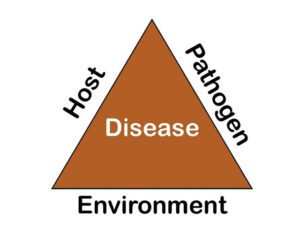
The diseased plant shows dark brown to black lesions of variable sizes on pods, seeds, branches, stem, leaflets, and stalk. The disease starts from distal plant portion which may result in wilting with eventual death of the infected plant (Mahmood et al. Ascochyta rabiei is considered a very devastating fungal pathogen responsible for Ascochyta blight to chickpea (Deokar et al. It plays a vital role in fulfilling the nitrogen requirement through symbiotic N 2 fixation and increasing soil fertility (Girma et al. rabiei.Ĭhickpea is an excellent drought-tolerant grain legume (Merga and Haji 2019). somnifera contains potent antifungal compounds that can be effectively exploited for the control of A.

Disease incidence was significantly reduced in 3% dose. In pot trial, the soil was amended by 1, 2, and 3% dry leaf material of the test plant species. Compound A was found highly effective against the targeted fungal pathogen with MIC 31.25 μg ml −1, followed by B with MIC value of 250 μg ml −1 as compared to 7.81 μg ml −1 MIC of a commercial fungicide mancozeb. Ethyl acetate fraction was further subjected to thin layer chromatography to separate the potent antifungal compounds A and B. Among these, ethyl acetate and n-butanol fractions completely inhibited the fungal growth. The effect of different concentrations (3.125, 6.25, 12.5, 25, 50, 100, 200 mg ml −1) of the 4 organic solvent fractions was assessed on in vitro growth of the pathogen. Methanolic leaf extract was fractionated with 4 organic solvents of different polarities namely n-hexane, chloroform, ethyl acetate, and n-butanol. somnifera significantly inhibited the pathogenic fungal growth. In a laboratory bioassay, a 0.2% concentration of methanolic leaf extract of W. This study reports the control of Ascochyta blight by using extracts and dry biomass of a weed plant, Withania somnifera (Family Solanaceae). The disease can be controlled by fungicides to reduce the environmental pollution. We recommend mowing at the highest setting and avoiding mowing when it is wet to create ideal growing situations.Ascochyta blight caused by a fungal pathogen, Ascochyta rabiei, is a serious disease of chickpea in most chickpea growing areas of the world. Treatment: Ascochyta is a disease that is foliar, which means that the grass will outgrow it. We saw these conditions near the end of July 2016, where we had 19 days over 90 degrees and some large rainstorms. It requires extreme heat and humidity, which often comes with large amounts of rain that are followed by a drought. Grasses Susceptible: Kentucky Bluegrass is the type of grass that is the most susceptible, but tall rescue and perennial ryegrass can also see Ascochyta Leaf Blight damage occasionally.Ĭonditions Favoring Disease: The conditions that produce this disease are a large reason that the state of Michigan rarely sees Ascochyta Leaf Blight. Although this grass may look dead, the crowns of the grass and the lower stems are rarely killed and you can typically expect an 80 to 100% recovery within a few weeks, according to Iowa State University.

This disease will leave large irregular patches or streaks of turf a straw color, as well as collapsed tips of grass.

We looked into the situation further and found some information on this disease, which is rare in Michigan because of the weather conditions that it requires. Some of our customers called us and mentioned that it appeared as if we had burned their lawns, but we looked in their history and we had not applied weed control and could not find any excess fertilizer in the affected sections of grass. Symptoms:Ascochyta Leaf Blight is a disease that looks similar to a fertilizer burn, which is part of the reason that we found out about the disease.


 0 kommentar(er)
0 kommentar(er)
